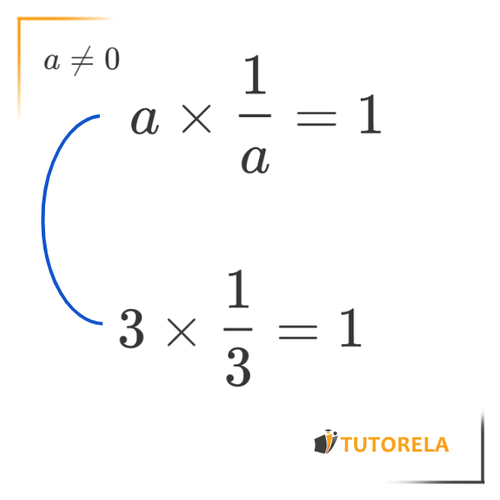Two numbers are multiplicative inverses when their product results in .
For example:
and are multiplicative inverses because
Two numbers are multiplicative inverses when their product results in .
For example:
and are multiplicative inverses because
Whenever a is different from , it follows that

Division is equivalent to multiplication by its multiplicative inverse,
That is:
Because is the multiplicative inverse of
Generally:

\( 8\times(5\times1)= \)
Two numbers are multiplicative inverses when their multiplication results in .
For example:
and are multiplicative inverses because
More examples:
The multiplicative inverse of is
The multiplicative inverse of is
The multiplicative inverse of is
The multiplicative inverse of is
The multiplicative inverse of is
The multiplicative inverse of is
Whenever a is different from , it happens that
\( 7\times1+\frac{1}{2}=\text{ ?} \)
\( \frac{6}{3}\times1=\text{ ?} \)
\( (5\times4-10\times2)\times(3-5)= \)
Division is equivalent to multiplication by the multiplicative inverse,
that is:
This is because is the multiplicative inverse of
In general:
Solve the following exercises
According to the order of operations, we first solve the expression in parentheses:
Now we multiply:
40
According to the order of operations, we first place the multiplication operation inside parenthesis:
Then, we perform this operation:
Finally, we are left with the answer:
According to the order of operations, we will solve the exercise from left to right since it only contains multiplication and division operations:
This simple rule is the order of operations which states that multiplication precedes addition and subtraction, and division precedes all of them,
In the given example, a multiplication occurs between two sets of parentheses, thus we simplify the expressions within each pair of parentheses separately,
We start with simplifying the expression within the parentheses on the left, this is done in accordance with the order of operations mentioned above, meaning that multiplication comes before subtraction, we perform the multiplications in this expression first and then proceed with the subtraction operations within it, in reverse we simplify the expression within the parentheses on the right and perform the subtraction operation within them:
What remains for us is to perform the last multiplication that was deferred, it is the multiplication that occurred between the expressions within the parentheses in the original expression, we perform it while remembering that multiplying any number by 0 will result in 0:
Therefore, the correct answer is answer d.
Solve the following exercise:
According to the order of operations, we first multiply and then add:
Solve the following exercise:
\( 12+3\cdot0= \)
Solve the following exercise:
\( 2+0:3= \)
\( \frac{25+25}{10}= \)